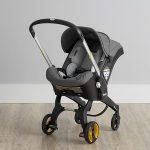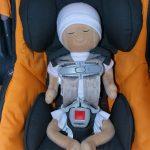Greetings DOB family,
You may have noticed that we have been pretty quiet over the past year. As doulas and entrepreneurs we are well-versed in being flexible and living in the moment, while always keeping an eye on planning for the future. All of that still did not quite prepare us for living through a pandemic. Like so many small businesses (and families), the past year did not look anything like we had planned for. We hunkered down with our own families, continuously evaluated and reevaluated how we could be of service to expectant parents, and simply made it through as best we could.
We remain committed to what we do, while adapting to how we do it. We want to share with you how we shifted our business over the last year, and what we are planning for the rest of 2021 and into the future.
In the early days of March 2020, while watching and listening to former clients and friends who work in medicine and epidemiology, we decided not to wait for the inevitable decision to be made for us and opted to suspend all in-person support and classes.
We set to work immediately, transitioning doula clients to virtual support and fashioning internet-based childbirth classes and parenting workshops. We knew that between the news cycle and long days of working from home, we could not expect people to have the same attention span. We distilled our usual content down to the truly “need to know” information and provided students with videos and other supplemental materials.
Our classes also dealt with the most pressing issue: navigating the obstacles of COVID. How can we help make this a less stressful situation? As is always our approach, we focused on evidence-based information and provided straight talk about birth and postpartum care in the pandemic.
We did not want to add more uncertainty into the lives of our clients (or our doulas) by going back and forth between in-person and virtual doula support. We knew that the situation was ever-changing, so with few exceptions, we have only been offering entirely virtual support over the last year.
At the end of 2020, we did not know what the future held for DOB. Like many other small business owners, we asked ourselves, how much longer can we do this? We had some serious and difficult conversations. In the end, our commitment to Baltimore families felt bigger than our struggles. Thanks in part to grants and other pandemic related support, we’ve been able to take the time to think about what we offer and how we offer it, and plan for the future.
The real turning point came this spring, when our doulas were able to be vaccinated and hospitals began allowing an additional professional support person in labor and delivery again.
We have fine-tuned our popular virtual Complete Childbirth and Baby 101 classes. We are planning a couple of limited-size in-person classes later in the year. With hospitals allowing professional doula support in addition to a partner, we have doulas who are fully vaccinated and are available to attend a birth in person for this summer. And our in-home doula support and newborn care has been re-worked with COVID-19 safety protocols.
Take care and thank you for continuing to support us as we help Baltimore families thrive,
Emily & Debbie




